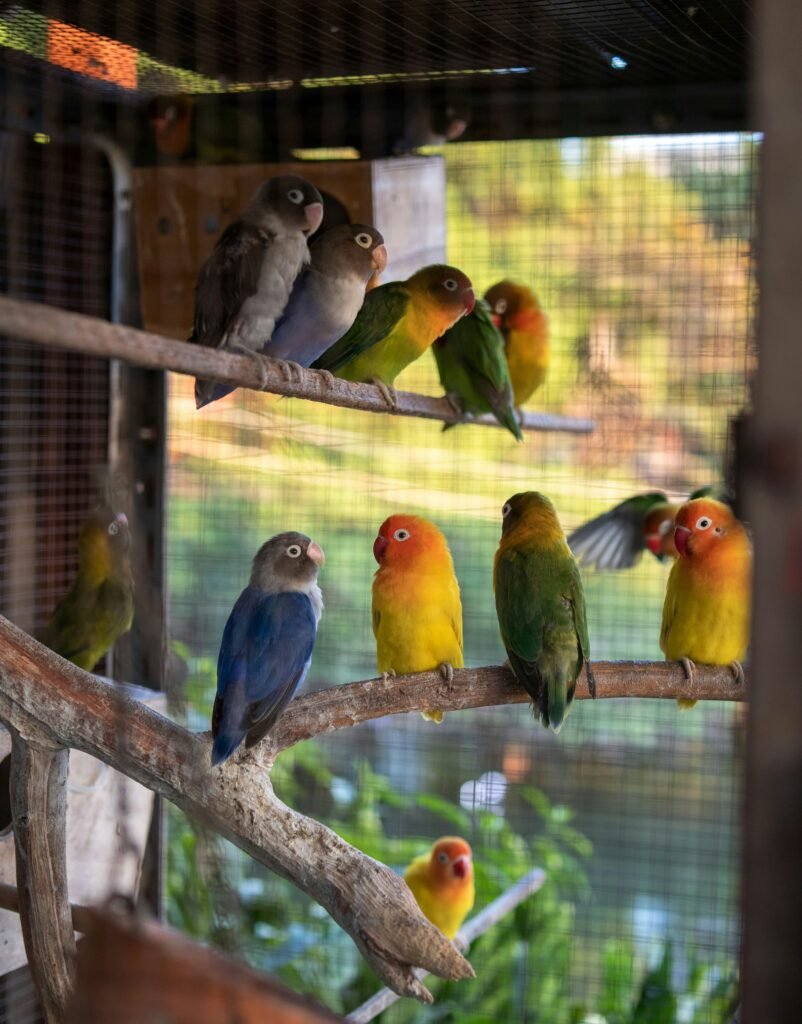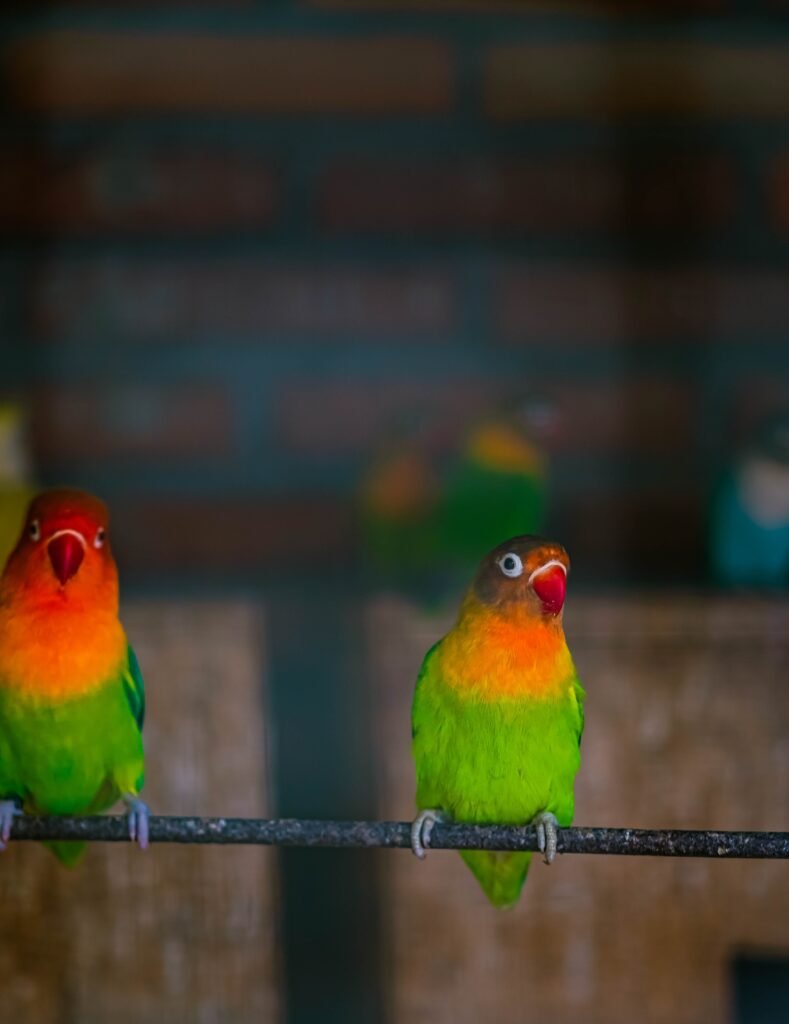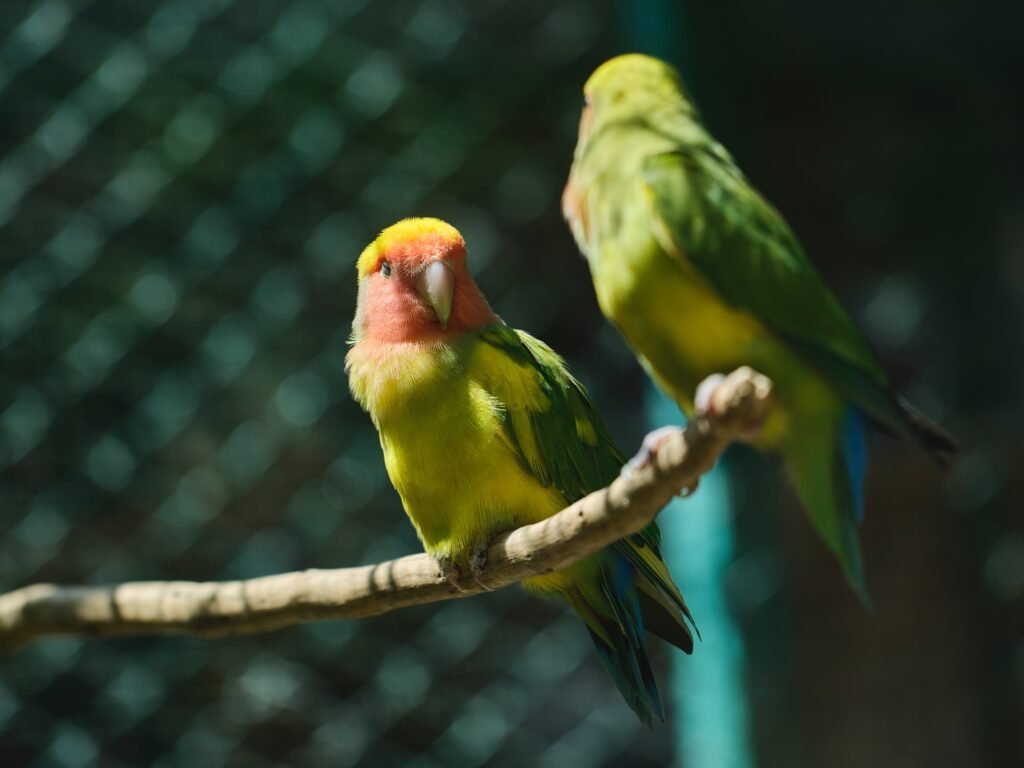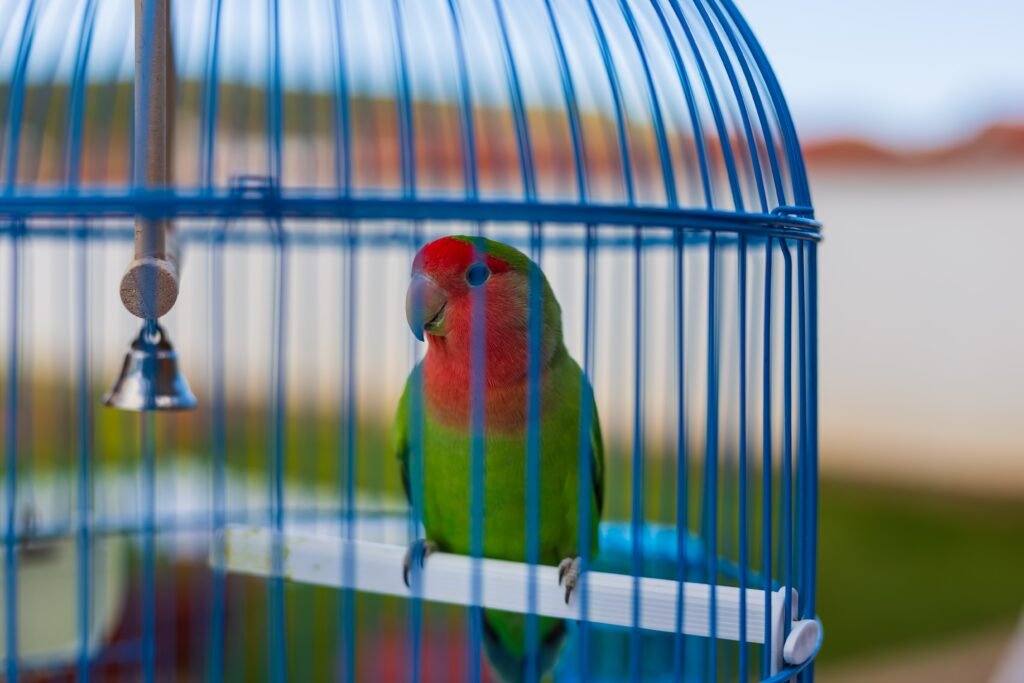 Lovebirds are beautiful and lively creatures that make wonderful pets. These small parrots are known for their affectionate behavior and their ability to form strong bonds with their owners. If you are considering getting lovebirds as pets or if you already have them, it’s essential to provide them with the right nesting materials. In this article, we will explore the nesting material requirements for lovebirds, ensuring that they have a comfortable and safe environment to breed and raise their young.
Lovebirds are beautiful and lively creatures that make wonderful pets. These small parrots are known for their affectionate behavior and their ability to form strong bonds with their owners. If you are considering getting lovebirds as pets or if you already have them, it’s essential to provide them with the right nesting materials. In this article, we will explore the nesting material requirements for lovebirds, ensuring that they have a comfortable and safe environment to breed and raise their young.
Why Nesting Material is Important for Lovebirds
Lovebirds are natural nest builders. Providing them with appropriate nesting materials not only satisfies their natural instincts but also promotes their overall well-being. Nests serve as a secure and cozy place for lovebirds to lay their eggs, hatch their young, and provide them with a safe environment to grow. Additionally, nesting behavior is an essential aspect of lovebird bonding and reproduction.
Lovebirds have a strong natural instinct to build nests, and providing them with appropriate nesting materials is crucial for their physical and mental well-being. A suitable nesting environment not only satisfies their natural instincts but also plays a significant role in their overall health and happiness. Lovebirds that have access to suitable nesting materials are more likely to exhibit natural behaviors, such as nest building, which can contribute to their overall happiness and sense of fulfillment.
Nests serve as a safe and secure place for lovebirds to lay their eggs and raise their young. By providing the right nesting materials, you are ensuring that your lovebirds have a comfortable and protective environment for breeding and nurturing their offspring. The nesting materials create a soft and warm bedding for the eggs, helping to regulate the temperature and provide insulation. This is crucial for the successful development of the embryos and the survival of the chicks.
Additionally, nesting behavior is an essential aspect of lovebird bonding and reproduction. By providing the necessary materials, you are encouraging lovebirds to engage in natural behaviors that strengthen their bond and facilitate successful breeding. Nest building is a cooperative activity for lovebird pairs, with both male and female birds actively participating in the construction process. This shared effort strengthens their bond and fosters a sense of partnership between them.
Essential Nesting Materials for Lovebirds
When it comes to choosing nesting materials for your lovebirds, it’s crucial to consider their safety and comfort. Here are some essential nesting materials that are commonly used:
- Wood Shavings: Lovebirds can use untreated, non-toxic wood shavings, such as pine or aspen, for nesting. These shavings provide a soft and cozy bedding material that is easy for lovebirds to manipulate. However, it is important to avoid cedar shavings, as the strong aroma can be harmful to birds.
- Shredded Paper: Plain, uncolored paper is safe for lovebirds and can be shredded into thin strips for nesting. This material is readily available and easy to replace. However, it is crucial to avoid using glossy or colored paper, as the ink or dyes may be toxic to the birds.
- Grass and Hay: Dried grass or hay can be used as nesting material for lovebirds. It provides a natural and comfortable option for them to build their nests. However, it is essential to ensure that the grass or hay is clean and free from pesticides, herbicides, or any other harmful chemicals.
- Coconut Fiber: Coconut fiber or coir makes an excellent nesting material option for lovebirds. It is soft, natural, and easy for them to work with. Coconut fiber provides a cozy and safe environment for the eggs and chicks.
- Soft Fabrics: Lovebirds may enjoy using soft fabrics like cotton or fleece for nesting. These fabrics provide warmth and comfort for the eggs and chicks. It is advisable to cut them into small strips or pieces for easy manipulation by the birds.
- Natural Materials: Lovebirds can also benefit from having access to natural materials such as twigs, small branches, and leaves. These materials mimic their natural environment and give them the opportunity to engage in natural behaviors. However, it is important to ensure that these materials are clean and free from any chemicals or parasites that could harm the birds.
- Commercial Nesting Materials: There are several commercially available nesting materials specifically designed for birds, including lovebirds. These materials are safe and convenient, providing a ready-to-use option for your feathered friends. They are often made from natural fibers and provide a soft and comfortable bedding for the eggs and chicks.
In addition to the above nesting materials, it is important to provide a variety of options for your lovebirds. This allows them to choose the materials that they prefer and feel most comfortable with. By offering a range of nesting materials, you are encouraging natural behaviors and providing a stimulating environment for your lovebirds.

Nesting Material Placement and Preparation
Now that you have gathered the necessary nesting materials for your lovebirds, it’s essential to know how to prepare and place them effectively. Follow these guidelines to ensure a suitable nesting environment:
- Nest Boxes: Lovebirds prefer enclosed spaces for nesting. Provide a nest box specifically designed for lovebirds, ensuring the size is appropriate for their species. The nest box should be placed in a quiet and secluded part of their cage or aviary. This provides them with privacy and a sense of security.
- Nesting Bedding: Line the nest box with a layer of nesting material, such as wood shavings, shredded paper, or coconut fiber. Avoid using excessive amounts to allow sufficient space for the lovebirds to construct their nests. The bedding should be soft and comfortable, providing a suitable surface for the eggs and chicks.
- Additional Material Availability: Offer additional nesting materials, such as grass, twigs, and soft fabric strips, near the nest box. This allows the lovebirds to collect and arrange materials according to their preference. It also provides them with the opportunity to engage in natural behaviors and further customize their nests.
- Nesting Material Replacement: Regularly monitor the nest box and remove any soiled or damaged nesting materials. Provide fresh materials as needed to ensure a clean and comfortable nesting environment. This helps maintain the hygiene of the nesting area and ensures the well-being of the lovebirds and their offspring.
By following these guidelines, you are creating an environment that mimics the natural nesting conditions for lovebirds. This encourages them to engage in natural nesting behaviors and provides them with a safe and comfortable space for breeding and raising their young.
Observing Lovebird Nesting Behavior
Once you have provided the appropriate nesting materials, it’s fascinating to observe your lovebirds’ nesting behavior. Here are some signs that indicate successful nesting:
- Collecting Materials: Lovebirds will actively gather nesting materials and carry them to the nest box. You may notice them picking up twigs, grass, or fabric strips and carefully transporting them to their nesting area. This behavior is an indication that they are preparing to build their nests.
- Nest Construction: Lovebirds will spend time arranging and building their nests using the provided materials. They may use their beaks and feet to shape the nesting material into a cozy structure. This behavior is often accompanied by chirping and excited movements, indicating their enthusiasm for the nesting process.
- Egg-Laying: Female lovebirds will lay eggs in the nest box. They typically lay one egg every other day until completing a clutch. This is an exciting milestone that signals the beginning of the breeding process. The female will carefully position the eggs in the nest and begin the incubation period.
- Incubation: Both male and female lovebirds take turns incubating the eggs, ensuring they remain warm and safe. The incubation period typically lasts for approximately 23 to 30 days, during which the parents diligently care for the eggs. This is a critical stage in the breeding process and requires a stable and comfortable environment.
- Chicks Hatching: After the incubation period, the eggs will start hatching, and adorable lovebird chicks will emerge. This is a joyous moment and an indication of successful breeding. The parents will continue to provide care and nourishment to the chicks as they grow and develop.
Observing lovebird nesting behavior is an exciting and rewarding experience. It provides insight into their natural instincts and allows you to witness the miracle of life as the chicks hatch and grow.
Conclusion
Providing the right nesting materials is essential for lovebirds to thrive in their breeding efforts. By offering a variety of safe and comfortable materials, such as wood shavings, shredded paper, grass, and coconut fiber, you can create a conducive environment for your lovebirds to breed and raise their young. Regularly monitor the nest box, replace soiled materials, and observe their nesting behavior to ensure their well-being. With proper care and attention to their nesting needs, your lovebirds will be able to create a cozy and secure home for their growing family.
FAQ
1. Why is nesting material important for lovebirds?
Nesting material is important for lovebirds because it satisfies their natural instincts and promotes their overall well-being. It provides them with a secure and cozy place to lay eggs, hatch young, and raise their offspring. Additionally, nesting behavior strengthens lovebird bonding and facilitates successful breeding.
2. What are some essential nesting materials for lovebirds?
Some essential nesting materials for lovebirds include wood shavings (pine or aspen), shredded paper, grass and hay, coconut fiber, soft fabrics (cotton or fleece), natural materials (twigs, small branches, leaves), and commercially available nesting materials specifically designed for birds.
3. How should nesting materials be placed and prepared for lovebirds?
Nest boxes should be provided in a quiet and secluded part of the cage or aviary, lined with a soft bedding material like wood shavings, shredded paper, or coconut fiber. Additional materials like grass, twigs, and fabric strips should be offered near the nest box for the lovebirds to collect and arrange according to their preference. Soiled or damaged nesting materials should be regularly removed and replaced.
4. What are some signs of successful nesting behavior in lovebirds?
Some signs of successful nesting behavior in lovebirds include actively collecting nesting materials, spending time building and arranging nests, female lovebirds laying eggs in the nest box, both male and female lovebirds taking turns incubating the eggs, and the hatching of adorable lovebird chicks.


